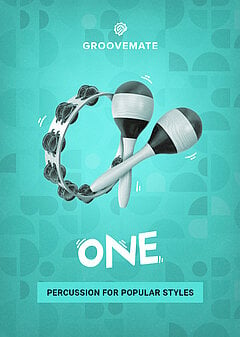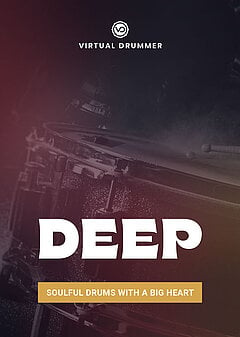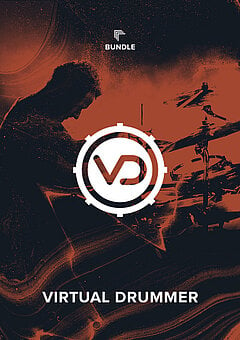How to Add Percussion Grooves to Your Tracks
Create the perfect percussion groove for any song in any genre, pumping up the beat with as much realism as possible.
MAY 2ND, 2021
Lay down your core beat (kick, snare, etc.) before bringing in percussion; it will make life much easier as you go about finishing your tracks. For a refresher, check out our article, How to Build a Groove — it goes into detail about where to place your kicks and snares and translating beats from your head into your DAW, so you definitely want to have that info ready to use before diving in here!
What to know before you begin
Let’s quickly clarify what we mean by percussion: we’re referring to non- kick & snare instruments and samples like tambourines, claps, shakers, and other auxiliary percussion (iZotope has a great breakdown of these and more in their article here). Your need for it might be as simple as you feel like adding percussion and it sounds good — but it’s wise to have a collection of purposes for which you know you can always turn to percussion. For example:
- You have the kick and snare down (and possibly the hi hat too), but you need something to fill in the extra space
- The beat needs more energy without increasing the track’s speed
- You don’t want the kick and snare going constantly, but you’re not sure what to fill the empty space with
- The mix sounds thin and you want to add more weight to the beat
- It’s not interesting enough yet and needs some extra spice
Try to lay down your kick and snare before the percussion to get in the habit of being deliberate (which will help you produce tracks faster overall); if inspiration refuses to strike, however, there’s no harm in starting with the percussion. Sometimes the right groove enables everything else to lock into place, while the wrong groove can kill a track entirely. That’s the potential power it holds in every one of your mixes.
Types of percussion grooves
Now that you’ve decided to add percussion, what sort of groove do you actually pick? While this varies a lot by genre, there are a few general guidelines you may find helpful.
It’s hard to go wrong with emphasizing beats 2 and 4, and it’s not as harsh on the ears as a percussion groove that hits 1 and 3 (which tends to sound more like a march). This is especially useful to keep in mind when your kick hits on beats 1 and 3, since there’s less clashing between the core beat and the percussion.
Start off using 8th note grooves — 16th notes carry more energy, but you don’t want to come out swinging at the very beginning. Go for medium intensity and then save a busier version of the same groove for the right moment. Often, changing only the speed of the tambourine, shakers, and other light percussion will completely transform the feel of the beat.
With percussion, you also have the power to change the entire feel of the groove. Say you have your kick on beats 1 and 3, and your snare on beats 2 and 4. If you give the percussion a swing groove, everything is going to feel completely different. Speed it up and syncopate the rhythm, and you can mimic a drum & bass groove. This is by no means an exhaustive list, and you can try out any number of variations to create dramatic changes in your percussion grooves.
To make this process far more intuitive, try out UJAM’s new plugin, Groovemate ONE. It’s designed specifically to provide you with quick access to all the basic percussion grooves you’ll need with tambourines, shakers, claps and more. Try out the Dotted 2 preset; it’s a quick way to add a light, rapid pattern that pumps way more energy into your tracks. You can also pull up any percussion loop of your choosing — and in typical UJAM fashion, it’s fully MIDI Drag & Drop-enabled, so you can instantly drop in a range of your favorite loops and tweak the timing and instrumentation, making it more flexible than any loop library.
Ways to make sequenced percussion sound realistic
One of the biggest dangers when sequencing percussion is the dreaded ‘machine gun’ effect in which the same or similar samples are repeated over and over again, and it’s especially problematic when you’re working with a limited sample set — problematic, but not impossible. Vary the note velocities and nudge the timing of the notes so it’s no longer perfect. In EDM, kicks and snares should typically be right on the grid and keep the same note velocities (hi hats are best on the grid but have varying velocities), otherwise something will sound ‘off.’ Percussion is your opportunity to breath some more life into your tracks, and it definitely shouldn’t be perfect, especially when everything else needs to be precise.
On the other hand, it’s easy to create too much variation in note velocity. When certain notes unnaturally stick out, that’s an easy giveaway for sequenced percussion. Many DAWs have velocity smoothers that help with this, easing the differences between notes to make the groove sound more natural.
Try adding a bit of saturation as well — as the groove distorts ever so slightly, it will also get compressed. With the right saturation plugin, you can make the groove feel like it’s bumping up against the diaphragm of a microphone in real time, letting you claw back some of the realism that’s lost in the sampling process. This also gives the groove more character, which can be used to distract listeners from the fact that the groove wasn’t recorded live, often with very convincing results.
Mixing percussion
It’s critical that you don’t allow the percussion to muddy up the kick and snare (for kick and snare mixing, check out our How to Mix a Beat article). To be extra certain you preserve their power, you can even gently sidechain the percussion off of the kick and snare. Cut out the lows with a high pass filter to avoid the kick, and notch out the low mids to give the snare plenty of room. This leaves you with mostly mid to high frequency content for the percussion, which is exactly what you want. You can even use a high shelf EQ to boost the top end of the percussion and give it some ‘air’ or ‘sparkle.’
Since the percussion is designed to be an accent to the core beat (kick, snare, etc.), it doesn’t need a ton of punch. Squeeze it with some compression, but only for consistency, not to emphasize the transients. You can be quite forceful since you’re treating the percussion as a ‘bed,’ a consistent layer designed to support the core beat. Sometimes you’ll want to add percussion but need to deal with an already cluttered mix. In this case, you’ll need to make room by EQing other parts of the mix. Use your ear and sweep the frequency spectrum with an EQ — when you find a range you like, start cutting that range in every instrument that can afford it without sounding thin. Small tweaks on multiple tracks add up quickly, so start small. You can always boost more later!
When you shouldn’t use percussion
Here’s an important lesson for all producers: you don’t need to go high energy all the time! There are moments in virtually every song where it’s actually better to have nothing going on. By creating ‘peaks and valleys’ of intensity, you can keep listeners engaged for much longer and have them gleefully anticipating the heavier moments. This is especially true before drops and choruses — creating a lull beforehand will make those sections much stronger.
Also, listen to the intensity of your core beat — if you’re using closed hi hats and a dry snare, you’re probably going for a super ‘tight’ feel. By adding percussion, you could introduce splashiness and drama when you don’t actually want it. In this case, the solution is not to add more, but rather to adjust your samples or re-evaluate the feel until you’re satisfied. Percussion generally has a ‘wet’ sound to it, especially if you add reverb, so factor that into your decision as well.
You’ll get a better feel for all of this over time. For now, just remember that percussion isn’t always the solution! It’s designed to be a sprinkle or accent on top of an already good track that simply needs to be filled out a little ... but it’s generally not going to bring your listeners deeper into your ambient soundscapes.
Wrapping up
Keep in mind that percussion isn’t typically the most important element in a track — but how you use it can dramatically shape your final mix. It can add a ton of life to electronic music and EDM while filling in the spaces that otherwise would make the song sound hollow or empty. That little bit of depth can make all the difference. UJAM’s Groovemate ONE can help you get the perfect percussion groove into your tracks quickly and with zero hassle if you want to speed up the process!
Be intentional with how you use percussion in order to progress faster as a producer, but don’t stress too much over it. For the most part, it’s just icing on the cake! Your core beat needs to be solid first, or the best percussion groove in the world isn’t going to help.
Stay up to date
Sign up and we’ll send you an e-mail with product news and helpful stuff every now and then. You may unsubscribe at any time.
Defy Limits
We develop software solutions that enable people to create, consume and interact with music.




